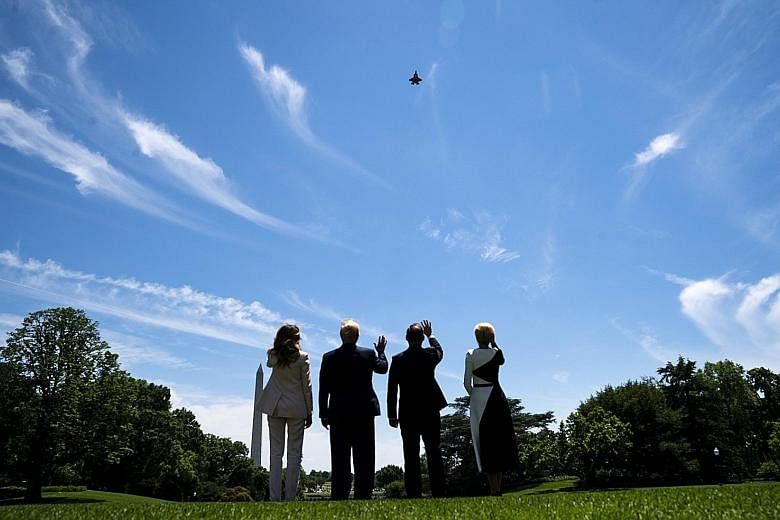US President Donald Trump has signed an agreement to send 1,000 additional American soldiers to Poland on a semi-permanent basis in return for a Polish commitment to buy US F-35 advanced fighter jets.
While the number of extra American troops deployed to Poland is not great, the move is significant. It heralds a wider realignment of US forces in Europe and is likely to further increase tensions between the US and Russia.
As Polish President Andrzej Duda put it during a visit to the White House on Wednesday, the new military deal "moves Europe and the US to another era".
The number of US troops deployed in Europe has declined from hundreds of thousands during the Cold War to a mere 62,000 today, largely acting as a reassurance to the Europeans that America's security guarantees to their continent remain undiminished.
But many American soldiers in Europe are deployed in the wrong places, with about 60 per cent of the total stationed in Germany. After the Japanese, the Germans host the second-biggest US military contingent in the world.
That made sense during the Cold War when the East-West divide in Europe ran through Germany and the Soviets were expected to launch a military thrust through German soil.
But the Soviet Union is long gone, Germany is now entirely surrounded by friendly nations and the nearest Russian troops are thousands of kilometres away from German borders. So American troops are deployed for a task which is no longer relevant.
The former communist countries of Eastern Europe - all of which have joined Nato, the US-led military alliance in Europe - have long argued that American forces should be on their soil, since the burden of Europe's security now falls on them, for they are much closer to Russia.
Russia's military invasion of Ukraine in 2014 has also heightened the East Europeans' fears about their sovereignty.
However, Washington tended to ignore appeals for the redeployment of American forces further east, not only because relocating from German bases - many of which were built during the 1950s - is an expensive proposition, but also because of fears that such moves would unnecessarily alienate Russia.
A further hindrance to any consideration of a US military redeployment to Eastern Europe is an undertaking that Washington and its European allies made to Russia back in 1997, under which Nato promised the Russians that it will not contemplate "additional permanent stationing of substantial combat forces" in Eastern Europe, in an effort to persuade the Russians that the West is not their enemy.
That promise has always been resented by the East Europeans, since it implied they will remain different from the rest of Europe and that Russia will have a permanent say over their security arrangements. But many key western European countries, and particularly Germany, argued that the obligation to Russia must be respected, even if Europe's strategic environment had worsened.
However, after Mr Trump became US President, the leaders of Poland - the biggest former communist country in Nato - saw a chance to change Washington's stance. They argued that Poland would be a more enthusiastic host to US troops than Germany, whose government constantly snipes at Mr Trump's policies.
They have touted the possibility of further US defence contracts and they appealed to Mr Trump's vanity; on a previous trip to Washington, President Duda appeared to support a suggestion that a new US base in Poland could well be called "Camp Trump".
Mr Trump, who received a rapturous welcome in Poland early in his presidency and is now considering another trip in September, appears to have been persuaded.
The extra 1,000 American troops being sent to Poland will join 4,000 who are already rotated through Poland's countryside. In return, the Poles have undertaken to purchase around 30 F-35 jets.
True to form, Mr Trump portrayed the agreement as a vindication of his policies. "I applaud President Duda's efforts to strengthen and modernise Poland's defences," he said after talks with the Polish leader this week.
And he took a sideswipe at Germany, by suggesting that the troop re-deployment is a response to German unwillingness to contribute more to European defences. "Germany is not living up to what they're supposed to be doing with respect to Nato, and Poland is," said Mr Trump.
But the key question is how the Russians will respond to this development. In an effort to avoid accusations of breaking existing agreements with Russia, the US claims that the additional troops in Poland will be "enabling forces" rather than a combat force.
But it is highly unlikely that Russian President Vladimir Putin, who has long warned that such a redeployment will be considered by Moscow as "provocative", will be persuaded by such a play of words.
So, Camp Trump may well herald a new Washington-Moscow confrontation.


